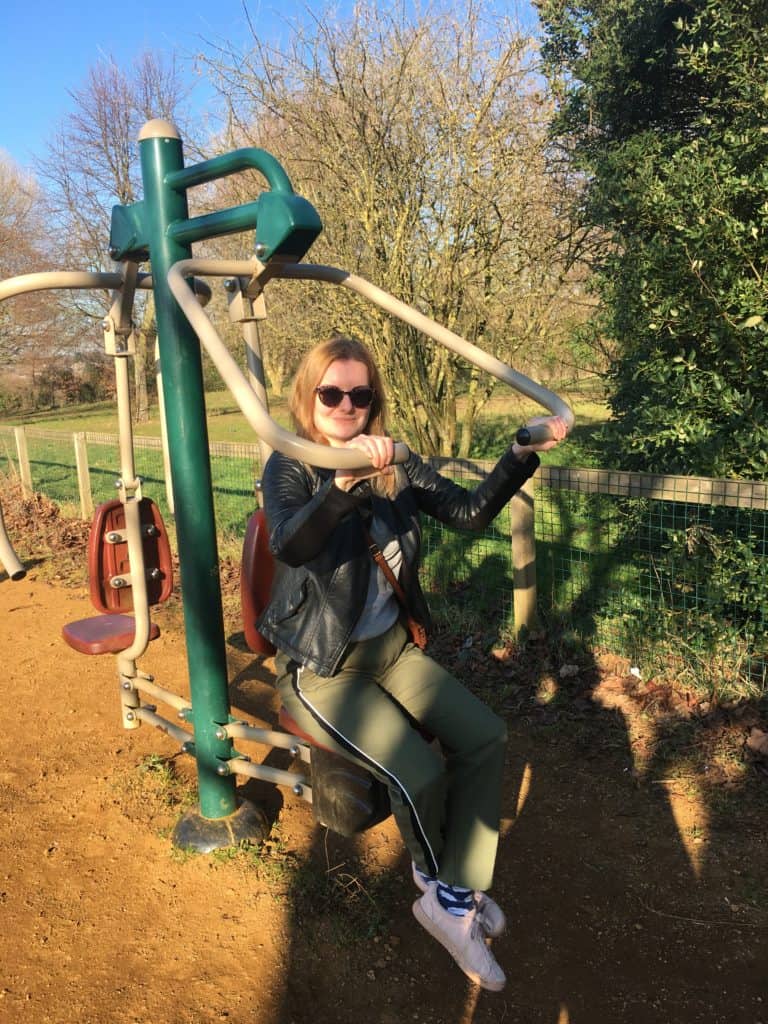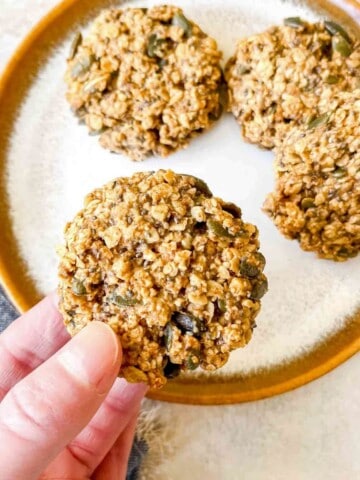A few weeks ago I was told I was in a POTS remission / no longer met the criteria for the condition. After posting this news on my Instagram, a large number of people either commented on the post or DM’d me and asked me to write about my experience with treatments that help to manage the symptoms of POTS (postural orthostatic tachycardia syndrome).
Here is my journey to a POTS remission and some products that I have found really helpful. I want to say that no longer meeting the criteria for POTS doesn't mean that I don't have dysautonomia. I do, and tests have shown this to be the case.
Please note that this post is for informational purposes only and does not constitute medical advice in any way. It is simply my story and experience.

Jump to:
The path to a diagnosis
As with many people who go on to be diagnosed with POTS, the path to my diagnosis was not easy, straightforward and definitely not quick. My symptoms began in a vague, unclear fashion over several years. Although I had a history of fainting in my teens and early twenties, I had a period of good health for several years. Then I started to experience a bit of light-headedness, fatigue and feeling generally unwell. All of those symptoms can be attributed to other conditions with which I was already diagnosed – namely vestibular migraine and fibromyalgia.
At that point I hadn’t ever heard of POTS, and I have come to realise that some doctors are similarly unaware or do not have the necessary expertise. Amongst other experiences, I endured a three-day marathon of testing at one hospital where, despite passing out on the tilt test, I was told I was fine save for a bit of low blood pressure.
Several years later a neurologist picked up on my symptoms and referred me to a leading cardiologist in the UK who specialises in the condition. I walked out of my first appointment with a bunch of referrals: a tilt test, 7-day holtor monitor, a CPET test (cardiopulmonary exercise test) an ECG of my heart, and referrals to specialists in hypermobility and respiratory physiotherapy. Finally, someone was taking me seriously and I was so thankful.
Those tests definitively showed tachycardia, and my tilt test met the diagnosis for POTS.* The CPET showed that I had dysfunctional breathing, and was breathing too deeply which was likely contributing to my symptoms of headaches, fatigue and light-headedness. I went on to be diagnosed with hypermobility by the specialist rheumatologist.
During that time my health can only be described as pretty terrible. I was having ‘classic’ migraine attacks in the form of head pain, as well as vestibular migraine attacks on a near-daily basis. Fatigue was high, my mood was low.
Simple everyday tasks were difficult, sometimes impossible. Having a shower zapped my energy, and still does to an extent, and I still remember trying to cook on Christmas Eve and not being able to stand up to do so due to feeling so faint.
A diagnosis can mean hope (hear me out!)
Strangely though, the diagnosis actually gave me some hope. I finally knew what I was dealing with and, importantly for me, the cardiologist had indicated that some people can improve their health to a point where they no longer met the diagnosis, and so were less symptomatic. It was going to involve a lot of hard work, but I was optimistic that things may improve.
I want to say at this point that I am fully aware that people with POTS suffer very different symptoms with the condition. As with many chronic conditions, there is a huge spectrum of symptoms with POTS. Some people suffer terribly and are bed-bound, others deal with symptoms but can lead a fairly active life.
Please don’t take this post as boasting, belittling or overlooking those people who suffer with this condition in a more problematic way than I do / did. I am not seeking to dis-credit any person’s experience with POTS.
How did I seek to improve my symptoms?
Once I had a diagnosis, my cardiologist ran through a number of lifestyle changes that would, hopefully, improve my symptoms, as well as medications that may help. To begin with I took a drug that helps to raise blood pressure, and did so for about a year until I had to take a different drug for another condition which contra-indicated with it.
The medication I took was slightly helpful but did come with some side-effects that weren’t painful, but weren’t exactly pleasant either.
Personally, I have found lifestyle and dietary changes to be the most helpful in managing my POTS symptoms, and are likely to have contributed to getting me into a POTS remission, and these are the ones that have worked best for me:
1. Exercise
Exercise is top of my list as I believe that it has been the most beneficial to my health, and has led me to the path of ‘remission’. As the organisation POTS UK states: ‘there is evidence that light to moderate exercise is beneficial or even curative in some cases of POTS’.
When I was first diagnosed the idea of doing any form of exercise felt impossible. I was struggling to walk for more than five minutes at a time, and often didn't leave the house for days at a time. However, it turned out that gradual exercise was achievable for me personally over time and it has been hugely beneficial.
I was fortunate to be given the name of a private physiotherapist that specialised in working with people with POTS, and I saw her three times over the course of the year after I was diagnosed. We talked through my diagnosis, symptoms, and the forms of exercise that I had done when I was well. She devised a programme that began with really simple exercises that could be done while sitting or lying down that sought to strengthen my lower body. Leg raises and ‘calf pumps’ were the main initial exercises.
These forms of exercise are beneficial as ‘increasing leg strength and core muscles (the muscles that support the spine) will improve blood return from the legs to the heart and brain’ (POTS UK).
My physio also advised that I use what she calls ‘pedals’ a few times a day, and to build up my time using them. Pedal exercisers are like a seated bike, but without the actual bike – if that makes sense! So you sit on your own chair (or can lie down) and use the pedals to replicate the same motion as a bike for your legs. They have varying resistance and a timer. I bought my pedal exerciser and am very happy with my purchase.
I found it so helpful to have a way to exercise at home that didn’t involve a gym membership and so could be done whenever I felt ready to do so. I also started by doing five minutes at a time, and doing this a couple of times a day rather than one bigger 'chunk' of exercise.
Once my exercise ability improved a little, we progressed from recumbent exercise (lying or laying back) to upright exercise. Walking came to be part of my daily life, in a way that it hadn’t for a few years. My physio set out a programme for walking which gradually built up the time, and then added in hills (well, light slopes!).
Over time I went from walking five minutes to be able to do longer times and distances. We also added resistance work into my exercise programme. Squats, deadlifts and lunges are the main exercises, and I still do these today. I started doing a few of these with no weights, and then gradually increased the number of reps and added in some light hand-weights.
Together, all these different forms of exercise have dramatically increased my leg strength and my symptoms have decreased. It wasn’t easy, and there were periods of time when my health declined rather than improved.
Flare-ups of symptoms came along and I tried not to panic and just do what I could. I still have times when everything flares for no particular reason, and exercise becomes a challenge. Even when this happens I try to do something little everyday – whether a short walk or some yoga at home.

2. Water intake
According to POTS UK, to 'increase blood volume, more salt and fluid is advised for most adults'. Water has become a big part of my 'diet', especially in the morning when symptoms are more of an issue, and I try very hard to get drink 2.5 litres a day (2-3 litres is recommended if you have POTS).
To do this I tend to drink from water bottles as it is easier to measure fluid intake that way rather than in smaller glasses or mugs. My favourite water bottle is the Black and Blum one, which holds 800mls of fluid. I try to have it near to me all the time and take frequent sips of water through the day.
Do note that you should always consult with a doctor before increasing salt intake.
3. Salt intake
Salt plays a big part in managing my symptoms and potentially getting me into a POTS remission / no longer meeting the diagnostic criteria for the condition. For many people salt is something to avoid, but if you have certain forms of POTS you will need to sprinkle that stuff on everything!
It is recommended that for some people with POTS an intake of 6-10 additional grams of salt a day is optimal (POTS UK). Speak with a doctor before increasing your salt intake as people with a particular form of POTS, high blood pressure or kidney issues should not consume extra salt.
As well as trying to eat foods that are naturally high in salt, making sure you add salt to your food is really important. In my experience, it would near-on impossible to consume enough salt without adding it to food. Personally I find regular table salt to be hard to consume in large quantities because it is just, well, so salty!
Instead, my cardiologist recommends using pink Himalayan salt and this has been a game-changer for me. It doesn’t have such a strong taste as table salt and so I can add far more to my food. Pink Himalayan salt is also reputed to be a good source of some minerals, and is less processed than regular table salt. You will see it in most of the savoury low histamine recipes on this site!
4. Relaxation
I always used to be ‘on the go’ kind of person. Of course, chronic illness often laughs at this mentality and you are forced to be more restful whether you like it or not. Keeping my heart rate down has become important to me, as it is very uncomfortable and gives me symptoms.
So I started making a conscious effort to do more relaxing activities. Reading, being in the park, gentle yoga, meditation, watching a film or listening to a podcast are all activities that I make sure to include in my daily life. They help calm both my mind and body, and this can only be a good thing for all of us – whether we are ‘potsie’ as my doctor calls me or not!

Together, all of those measures have made a big difference to my health and my symptoms. While I still have autonomic issues, as confirmed on some recent tests, and suffer with orthostatic hypotension, I no longer meet the diagnostic criteria for POTS and so am considered to be in a 'POTS remission'.
It is unclear whether this will be permanent, or is a temporary remission, but it is really encouraging to have seen such progress. It has been tough and a long journey to get to this point. I still experience symptoms every single day, but they are less life-defining than they once were.
If you are in the same place that I have been until recently, then speaking with your doctor about these lifestyle changes may be very helpful. The POTS UK website is also a great source of information. I hope that you have found this helpful.
Related posts
Using a pedal exerciser for PoTS / dysautonomia
I'm active on Instagram and Twitter if you would like to follow along!
*diagnostic criteria may vary depending on country, and may also be revised over time.
**please speak with a trained medical professional before starting any new diet or taking any new supplements. See my disclaimer for details.

















Bobbie says
Hi I have recently been diagnosed with pots and It’s been pretty severe. How are you doing now? This happened to me literally from one day to the next my life hasn’t been the same I try to pin point how it happened but I have no clue im scared and sad a lot of the time not knowing what the future holds. Any advice ?
Claire says
So sorry to hear this Bobbie, and I hope you have a good cardiologist to help you with appropriate treatments. My symptoms are better than they were, with a combination of medication and lifestyle changes. The POTS UK website is very helpful if you haven't seen it already. All the best, Claire